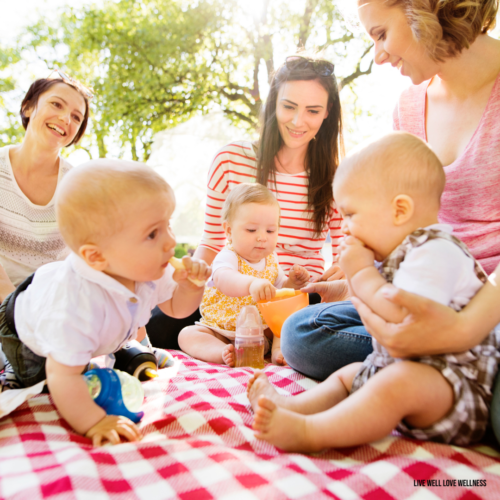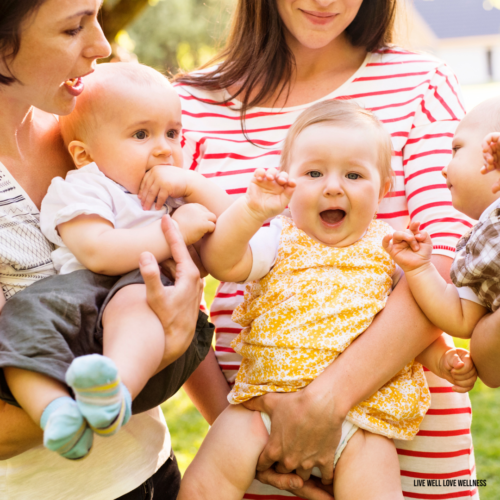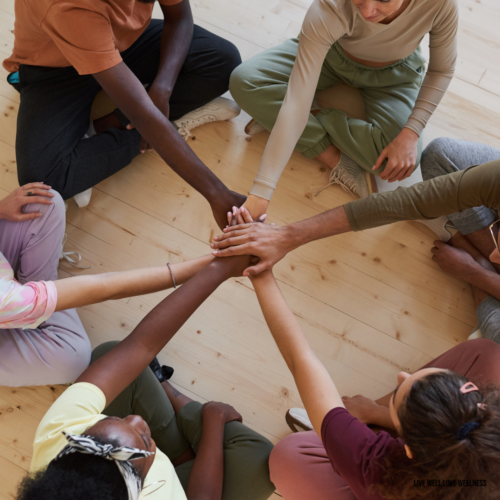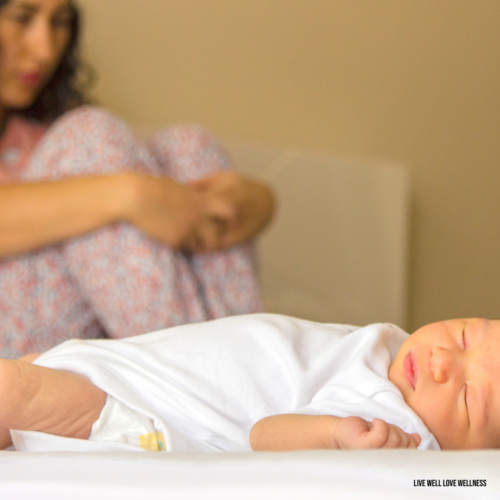Healing from Birth Trauma was written by Joanne Verrill an amazing lady with so much insight into health both physical and mental. I respect her work and findings so much and are excited to share another one of her articles with you. This is a great read on how we can support those many women who experience birth trauma.
1.Summary for Healing from Birth Trauma
Advocacy is a fundamental aspect of social work. It is a multifaceted area to explore as the issue that surrounds a vulnerable person needing advocacy can be a complex macro system. Mental health is one area in which people become very vulnerable and is an area in which all of us are affected by within our lifetime- either directly or indirectly. Lack of awareness of the cause of mental health issues is one of the biggest barriers that can prevent support been ascertained, which adds to the impact of mental health issues overall.

One specific area of mental health needing advocacy is PTSD in relation to traumatic birth. It is becoming apparent that this area is impacting our community but is largely unspoken of and is unknown to many.
Statistically the impact of traumatic birth is evident with an alarming rate of women reporting they have experienced a traumatic birth. Around 34% of women experience a traumatic birth. This community issue is not widely spoken of, which means that the impact of this issue goes largely unaddressed ( Cheryl & Watson, 2008).
2. Target Audience Needing Advocacy
Acknowledging these statistics, we can see that there is a need for women to gain advocacy during and after birth. Many expecting mothers report that they felt a sense of helplessness during birth and felt that they were not listened to or felt disempowered by medical staff (BBC, 2021). After birth, the isolation may intensify as the feeling of alienation grows, as well as the belief that the other family members and wider community would not understand or be sympathetic and offer support (Zone, 2018)
2.Barriers that Justify Advocacy
As we can justify the need for advocacy in healing from birth trauma by seeing the impact it is having on women within the community, there are some clear barriers that effect women. Firstly, seeking support, and secondly, action from the community and support to advocate. The stigma that surrounds childbirth is the primary barrier. The principal belief that childbirth is normal, and a woman and her family should be able to manage the event is a stigma that is not only carried by the mother but also medical staff, and the community at large (Dennis & Chung-Lee, 2006).
Trauma is best defined as an experience that is outside human expectation. A woman that is expecting a child will often have an expectation of how the birth will happen. When the situation changes due to complications, changes in the environment that we have encountered during Covid-19 (restriction to who may be present during the birth) or simply not understanding the process and how the mothers’ body will change and respond after birth can impact a woman and result in trauma (Simkin, 2020).

The belief that childbirth is a regular, normal part of human life and complications can be a part of the experience, can prevent women from seeking support during and after a traumatic birth. A common complaint from women during birth is they often feel that they are not being heard by medical staff and feel that if they had been listened to that that would have felt safer and even prevented risk that they were exposed to (Zone, 2018).
A new mother may often feel that what she experiences is all a part of childbirth and feel that asking for help is unnecessary. The stigma of “normal childbirth” within the community can also prevent mothers from speaking out, and from recovering.
The experience of a traumatic birth can affect the attachment between the mother and child. If not addressed, this can prolong trauma as well as have an adverse effect on the child’s development (Putnam, 2009.) Studies are now showing a link between traumatic birth-attachment-behavioral issues within a child. Understanding the impact of a traumatic birth better may give understanding to a child’s behaviour by being able to look more accurately at the macro impact on the child. Advocating for increased awareness and understanding around traumatic birth may help remove stigmas and may minimize trauma for the mother as well enabling healing from birth trauma.
4.Advocacy Types to Support Healing from Birth Trauma
It is important to remember that advocacy is still a fuzzy term and there is no conclusive evidence to show the effects or impact of advocacy. This is due to the diversity of the supports that are available for people needed advocacy and the challenges in how to document the effects of advocacy (Stewart & Maclntryre, 2013).
When reflecting on the issue of trauma experienced through childbirth two types of advocacies that would support this topic of Healing from Birth Trauma would be: peer advocacy and citizen advocacy.

Peer Advocacy: One commonality with women that experience birth trauma is the isolation and belief that what they are experiencing is normal and therefore should be able to deal with it (BBC, 2021). This stigma that many women adopt can leave a woman and her family in a vulnerable state. Peer advocacy takes place where the advocate and the advocacy support have common ground of a share experience (Futuremover, 2012).
Communication and allowing the voice of the mother to be heard may in fact prevent trauma. Women that have experienced a traumatic birth also stated that they felt that they were left out of the process by not having different things explained to them. The breakdown of communication can turn a painful, scary birth into a traumatic experience. Allowing a mother to express her concerns during the birth as well as sharing the experience with others after the birth is a way of shortening the suffering or even preventing trauma developing into bigger mental health issues such as postnatal depression and PTSD (Simkin, 2020).
The evidence within studies can demonstrate the effectiveness of peer advocacy for women who have experienced a traumatic birth. Having access to support through others that have had a similar experience can give a woman and her family a sense of connection and eliminate the feeling of isolation (Rossman, Greene, & .Meier, 2015).

A study was done in Chicago hospital concerning woman that give birth to severely underweight premature babies. The study examined the use of peer support to enable women to make maternal connection with their child after the stress of their birth. The study was a longitude study that followed the outcome of peer support given to women. It looked at the recovery of the women after the stress of the birth and the development of their maternal connection with their child (Rossman, Greene, & .Meier, 2015). The outcome of the study concluded that the woman in the study believed that the use of peer support and modelling throughout the duration of recovery that was the key to establishing healthy bond between mother and child. The participants revealed that peer advocacy gave them a sense of hope while working through the grief, loss, anxiety and stress of their births (Rossman, Greene, & .Meier, 2015).
Self-advocacy: The ability to share experiences and voice concerns regarding their experiences involving a traumatic birth is one of the most powerful ways of gaining support and creating change- especially regarding the care given and shifting the stigma that increases the affect of the trauma experienced. Self-advocacy is defined by the ability to communicate your needs to another and convey your thoughts and feelings which enables connection to take place (Guilani, 2020).
Studies carried out in 2008 directed at women’s interactions with a health service in rural Australia used self-advocacy to collect evidence in order to effect change. The study uses a qualitative design to involve many women participating in an in-depth interview. The women that volunteered for the study were able to use their voice to advocate for change in the health care provided. Their experiences were heard, and this allowed accurate identification of the needs and necessary changes (Warran, Markovic, & Manderson, 2006).

Self-Advocacy not only identifies specific needs, but it also enables others to find their voice by hearing from others who have had similar experiences. This type of advocacy enhances connection within a community while breaking down stigmas, as well as creating accurate change by identifying specific needs (Guilani, 2020).
Both these models support the recovery process and healing from birth trauma.
5.Model of Social Action
Social action is the process mobilisation in creating change that is necessary for the enhancement of the lives of individuals and community groups (Box, 2021). In reflection of supporting women who have experienced traumatic births, social action can support in the changing of stigmas around childbirth by amplifying the voice of the women impacted. This social issue can enable women to connect to much needed supports in order to enhance recovery and potentially prevent detrimental trauma.
Model of social action: Mobilisation through community leadership. This is an issue that impacts not only the mother recovering from trauma, but also the child and the other family members. This issue therefore impacts upon the wider community. Mobilising community members to use their own experiences to create awareness is a powerful way of enabling long lasting change (Box, 2021). Supporting community members to lead the way in creating awareness- in order to move stigmas around childbirth- is an impactful means of social action. Promoting leadership within the community creates a sense of ownership of the change. Actions that come from the community members will always have a greater impact, as the ones promoting the change have a firsthand understanding of the issues and the detrimental effects if change does not take place (Box, 2021).

Model of social action: The conscientization model. Education and bringing awareness into the community and medical supporting bodies is critical to changing the stigma surrounding childbirth. If there is no awareness of the issue, such as 34% of women experience traumatic birth or what even defines trauma, there need for change is not recognisable (Beena & Kaushik, 2021). Education enlightens the wider community of the issues resulting in re-education and change. The conscientization model enables the voice of the vulnerable to be heard, enabling change to be direct and effective (Beena & Kaushik, 2021). Education within the community can not only shift stigmas but enhance the support for women and families that experience birth trauma.
Bringing awareness and change to the medical support is pivotal to reducing the number of women who experience trauma during birth. This awareness can act as a tool for changing the means of communication with the expecting mother and processes involved during labour and birth. These changes may take the place of birth trauma support groups, re-education or training for medical support, and media campaigns to build awareness.
6.Conclusion
Social action and advocacy is motivated by identifying the need for change in order to prevent harm within a community (Box, 2021). Advocacy is the act of supporting the vulnerable and enabling them to have their voice heard while pursuing change. Women that have experienced traumatic birth can experience a sense of isolation which stems from the belief that they cannot speak about their experience (BBC, 2021). Advocacy for these women can begin to challenge the stigmas and enhance the process of change. Social action around this issue can not only create awareness but challenge the mindset of childbirth within the community, the women going through pregnancy, and the medical support systems. Social action can bring to light the impact the issues are having on the community as well as mobilising community members to make necessary change as well as assist women in healing from birth trauma.
References for Healing from Birth Trauma
Cheryl, B., & Watson, S. (2008). Impact of Birth Trauma on Breast-feeding. Nursing Research. Volume 57 issue 4. doi: 10.1097/01.NNR.0000313494.87282.90, 22-234.
BBC. (2021). The effect of childbirth no-one talks about – BBC Future. Retrieved from BBC: https://www.bbc.com/future/article/20190424-the-hidden-trauma-of-childbirth
Beena , A., & Kaushik, A. (2021). Model s of Social Action. http://www.ignou.ac.in/upload/Bswe-003%20Block-3-UNIT-13-small%20size.pdf.
Box, C. T. (2021). Section 4: Social Action. Retrieved from Community Tool box: https://ctb.ku.edu/en/table-of-contents/assessment/promotion-strategies/systems-advocacy-and-community-organizing/main
Dennis, C.-L., & Chung-Lee, L. (2006). Postpartum Depression Help-Seeking Barriers and Maternal Treatment Preferences: A Qualitative Systematic Review. Birth Issues in Prenatial Care. Volume 33 issue 4 https://doi.org/10.1111/j.1523-536X.2006.00130.x, 232-331.
Futuremover. (2012, November 12). Advocacy Models . Retrieved from Furturemoves: Training and Consultancy: https://futuremoves.wordpress.com/2012/11/12/advocacy-models/
Guilani, C. ( 2020, December 29). Self-Advocacy: What is this & How to Develop this Skill? Retrieved from Everhour: https://everhour.com/blog/self-advocacy/#:~:text=%20Self-Advocacy%20Skills%20to%20Implement%20in%20Your%20Daily,when%20and%20how%20to%20ask%20for…%20More%20
Putnam, F. (2009.). The Impact of Trauma on Child Development. Juvenile & Family Court Journal. Volume 57 issue 1 https://doi.org/10.1111/j.1755-6988.2006.tb00110.x, 1-11.
Rossman, B., Greene, M., & .Meier, P. (2015). The Role of Peer Support in the Development of Maternal Identity for “NICU Moms”. Journal of Obstetric, Gynecologic & Neonatal Nursing. Volume 44 issue 1, 3-16.
Simkin, P. (2020). Pain, Suffering, and Trauma in Labor and Prevention of Subsequent Posttraumatic Stress Disorder | Springer Publishing. The Journal of Perinatal Education Vol 20 issue 3, 18-27.
Stewart, A., & Maclntryre, G. (2013). Advocacy: Models and Effectivness. Insight. Iriss, Institute for research and Innovation in Services. https://www.iriss.org.uk/sites/default/files/iriss-insight-20.pdf.
Warran, N., Markovic, M., & Manderson, L. (2006). Typologies of Rural Lay-Health Advocacy Among Rural Women in Australia. Women & Health. Volume 43- Issue 4. https://doi.org/10.1300/J013v43n04_03, 27-47.
Zone, T. P. (2018, June 30). Birth Trauma. 5 Women Share Their Experiences . Retrieved from YouTube: https://www.bing.com/search?q=Birth+Trauma%3A+5+Women+Share+Their+Experiences+-+YouTube&cvid=96a13b310384411d9a73fa56b16310bd&aqs=edge..69i57.1530j0j1&pglt=2083&FORM=ANNTA1&PC=ACTS
Other blog posts by Jo Verrill




